Outlets in a 3 cm thick backsplash.
jillybean103
4 years ago
last modified: 4 years ago
Featured Answer
Sort by:Oldest
Comments (6)
weedmeister
4 years agoRelated Discussions
Silestone (or Ceasarstone) countertop...2 cm or 3 cm Preferences?
Comments (10)I live in California. Most granite/marble/quartz here is 2cm although 3cm can be found. Cabinets have to be level no matter what. I have Caesarstone on my perimeter counters that are 3cm with no laminated edge. My island is 2cm marble with a mitered edge that doubled it to 4cm. My butcherblock counter is about 1 1/2" thick (a little less than 4cm). So all counters are a different thickness and I don't even notice the difference in thicknesses. I think the thinner edge is slightly more contemporary looking, but it's really up to what you like. Plywood with metal supports on the island before the marble was installed: 3cm Caesarstone (Arctic White), 2cm marble, 1.5" butcherblock:...See MoreGranite quote - 2 cm vs. 3 cm granite
Comments (30)We have somewhere around 140 sf of granite in the kitchen; big kitchen with big island plus a buffet separating kitchen and family room. So the $14k price from the second place is about $100/sf (for both material and install). This is a quote for the exact type of granite we chose - we went to yards to look at various slabs and chose the Blue Eyes as the one we liked the look of best. Then our GC sent out the dimensions of our requirements to the two shops for quotes for our specific requirements. From what I have seen/read the Blue Eyes is on the expensive side, it reads more as a gray with blue highlights than blue, but it does have the blue which I guess adds to the expense. But DH is in love with it... The Costa Esmerelda slabs are cheaper - $8500 installed for 4 slabs. I think we're about 110 sf there (quote includes slab granite for shower walls in addition to counter and tub) so about $77 per square foot. I think what we've chosen is on the more expensive side for granite; funny how it seems to work out that way. Original allowances from our contractor were $10k for kitchen and $4k for bath, so we're over that (bath one was for granite countertop and tile shower, but I'm really leaning towards the granite for both and no grout!)...See More2 cm vs. 3 cm quartzite
Comments (20)With a mitered edge, the line tends to be hidden on the corner transition. Some of the quartzites are pretty expensive so the 3 cm might cost significantly more (though the fabricator will charge something for the labor of making a laminated edge and probably even more for a mitered edge so that offsets the extra cost of 3 cm unless you go for a 2 cm edge). Our quartzite is laminated, not mitered and the fabricator did a good job so I mostly don't notice the line. Only when I look for it. You don't need to do a laminated edge even if there is plywood under it. Two friends of mine did a 2 cm thin edge. One used a simple trim molding of wood matched to the cabinets to cover the edge of the plywood. The other left the plywood edge uncovered - I know because I put my head under the counter and looked into the shadow for it. If I was doing it, I'd probably cover with a trim piece because it would bother me, but only someone very TKO who looks for it would notice if you didn't....See More3 CM Quartz Countertop to replace 4 CM Laminate Countertop
Comments (21)You do not need to stack two 2cm slabs on top of each other to make it look like you are using 4cm thick slabs. You only need a small amount of extra material (1-2â inches depending on edge type) to beef up just the outside edges of the counters. Laminated or mitered edges are very common here in So. Cal., where most stone and quartz is sold in 2cm size, rather than 3cm. The fabricator will put a 5/8â thick plywood subtop that is a little narrower than the finished counter size on top of the cabinet. Then the 2cm slab counter is put on top of the plywood. A narrow strip of the quartz is attached just at the edge of the counter to hide the edge of the plywood and make the whole counter look thicker. For standard 24â deep cabinets, the finished counter width with overhang is typically 25.5.â I donâÂÂt know what brand of quartz you plan to buy, but Caesarstone slabs are 56.5â wide, Hanstone is 55â wide, Silestone is 54âÂÂ, Cambria is 55.â (Some brands sell wider âÂÂjumboâ slabs if you have deeper counters.) Assuming a 55â wide slab, two 25.5â deep counters will use up 51â (plus a small amount of loss in the cutting process), leaving the few inches you need for the edge strips. You should need the same number of slabs whether you use 2cm or 3cm material. The thinner material will cost less, which should offset the increased labor cost for the laminated or mitered edge. I am going to try to attach pictures that show the different types of edges....See Morejillybean103
4 years agomark_rachel
4 years agowacokid
4 years agoRon Natalie
4 years ago
Related Stories
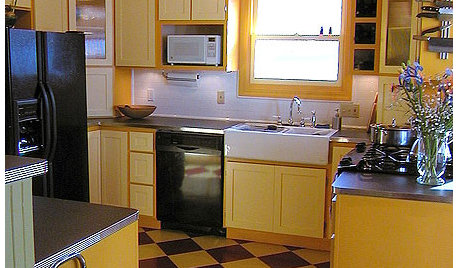
KITCHEN DESIGNKitchen Remodel Costs: 3 Budgets, 3 Kitchens
What you can expect from a kitchen remodel with a budget from $20,000 to $100,000
Full Story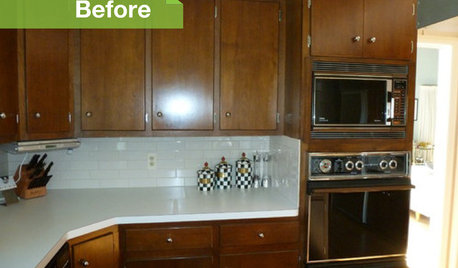
KITCHEN DESIGN3 Dark Kitchens, 6 Affordable Updates
Color advice: Three Houzzers get budget-friendly ideas to spruce up their kitchens with new paint, backsplashes and countertops
Full Story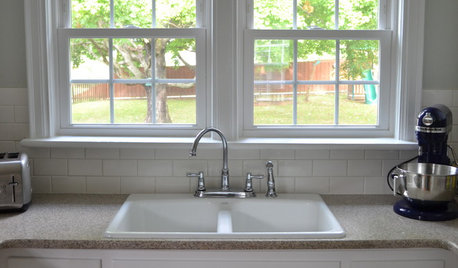
KITCHEN BACKSPLASHESHow to Install a Tile Backsplash
If you've got a steady hand, a few easy-to-find supplies and patience, you can install a tile backsplash in a kitchen or bathroom
Full Story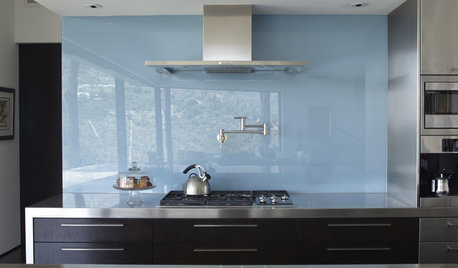
KITCHEN DESIGNThe Future of Backsplashes
Grout is out. Continuous sheets of glass, stone, metal and porcelain are saving cleaning time and offering more looks than ever
Full Story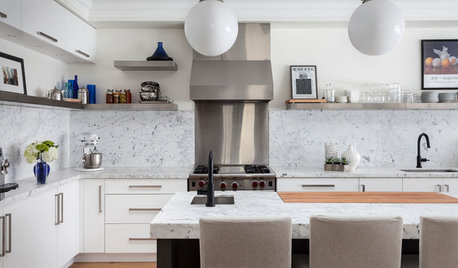
KITCHEN BACKSPLASHESWhy You Should Embrace a Solid Slab Backsplash
The effect is stunning, and yet the cost can be minimal. Here’s what to know about using full slabs of stone in your kitchen
Full Story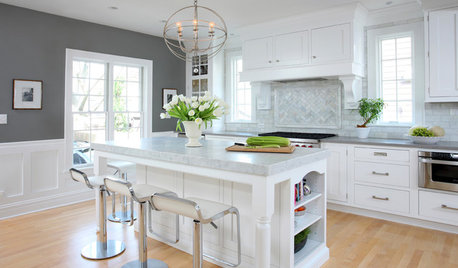
KITCHEN DESIGNHow to Add a Kitchen Backsplash
Great project: Install glass, tile or another decorative material for a gorgeous and protective backsplash
Full Story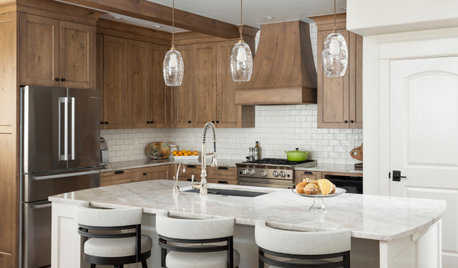
KITCHEN BACKSPLASHESWhere to Start and Stop Your Backsplash
Consider these designer tricks to work around cabinets, windows and other features for a finished look in your kitchen
Full Story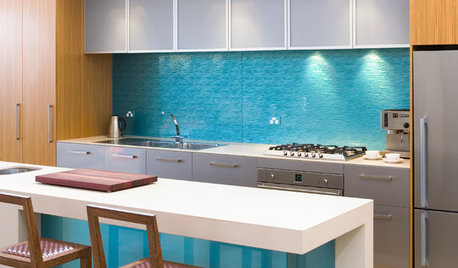
KITCHEN DESIGNHouzz Quiz: Which Kitchen Backsplash Material Is Right for You?
With so many options available, see if we can help you narrow down the selection
Full Story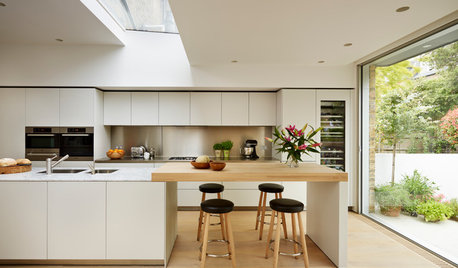
MATERIALSKitchen Ideas: How to Choose the Perfect Backsplash
Backsplashes not only protect your walls, they also add color, pattern and texture. Find out which material is right for you
Full Story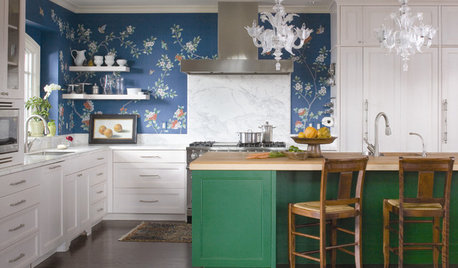
KITCHEN DESIGNTry a Shorter Kitchen Backsplash for Budget-Friendly Style
Shave costs on a kitchen remodel with a pared-down backsplash in one of these great materials
Full StorySponsored
Your Custom Bath Designers & Remodelers in Columbus I 10X Best Houzz



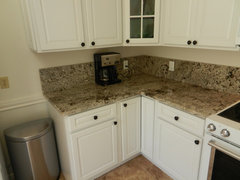
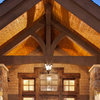
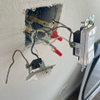
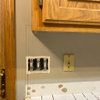
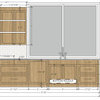
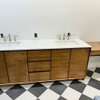
User